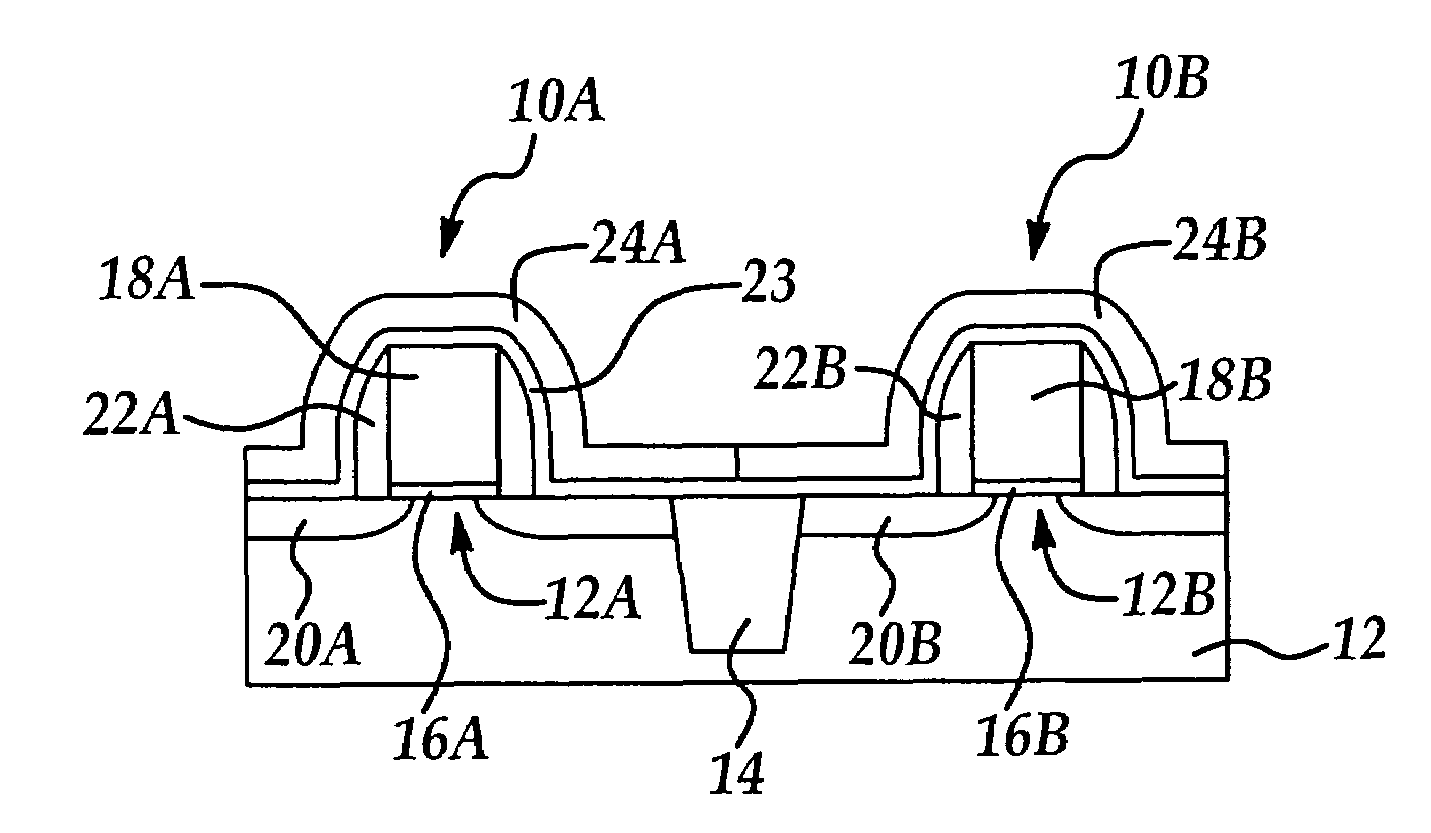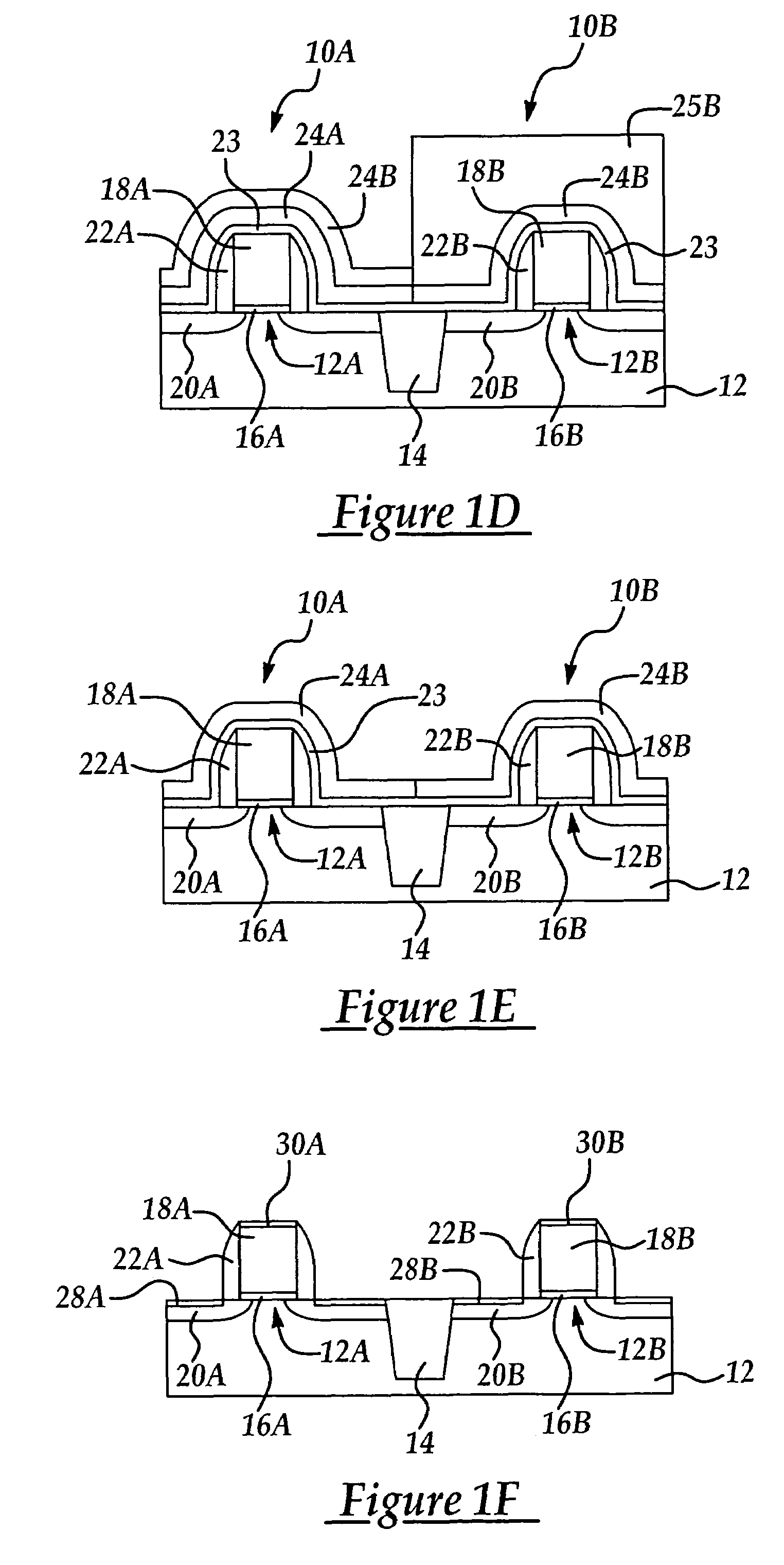Method for selectively stressing MOSFETs to improve charge carrier mobility
a selective stressing and charge carrier technology, applied in the field of mosfet device formation, can solve the problems of limited success of approaches, increased limitation, and thickness of dielectric stress layer, and achieve the effect of improving charge mobility and method
- Summary
- Abstract
- Description
- Claims
- Application Information
AI Technical Summary
Benefits of technology
Problems solved by technology
Method used
Image
Examples
Embodiment Construction
[0013]Although the method of the present invention is explained with reference to exemplary NMOS and PMOS devices, it will be appreciated that the method of the present invention may be applied to the formation of any MOSFET device where a stress level is controllably introduced into a charge carrier channel region by selective formation and subsequent removal of stressed dielectric layers overlying an NMOS and / or PMOS gate structure.
[0014]Referring to FIGS. 1A–1F in an exemplary embodiment of the method of the present invention, are shown cross-sectional schematic views of a portion of a semiconductor wafer during stages in production of CMOS structures including NMOS and PMOS devices 10A and 10B. For example, referring to FIG. 1A is shown a silicon substrate 12 including respective p-doped well regions 12A and n-doped well region 12B formed by conventional methods, for example a masking process followed by ion implantation and activation annealing. Formed by conventional processes...
PUM
 Login to View More
Login to View More Abstract
Description
Claims
Application Information
 Login to View More
Login to View More - R&D
- Intellectual Property
- Life Sciences
- Materials
- Tech Scout
- Unparalleled Data Quality
- Higher Quality Content
- 60% Fewer Hallucinations
Browse by: Latest US Patents, China's latest patents, Technical Efficacy Thesaurus, Application Domain, Technology Topic, Popular Technical Reports.
© 2025 PatSnap. All rights reserved.Legal|Privacy policy|Modern Slavery Act Transparency Statement|Sitemap|About US| Contact US: help@patsnap.com



